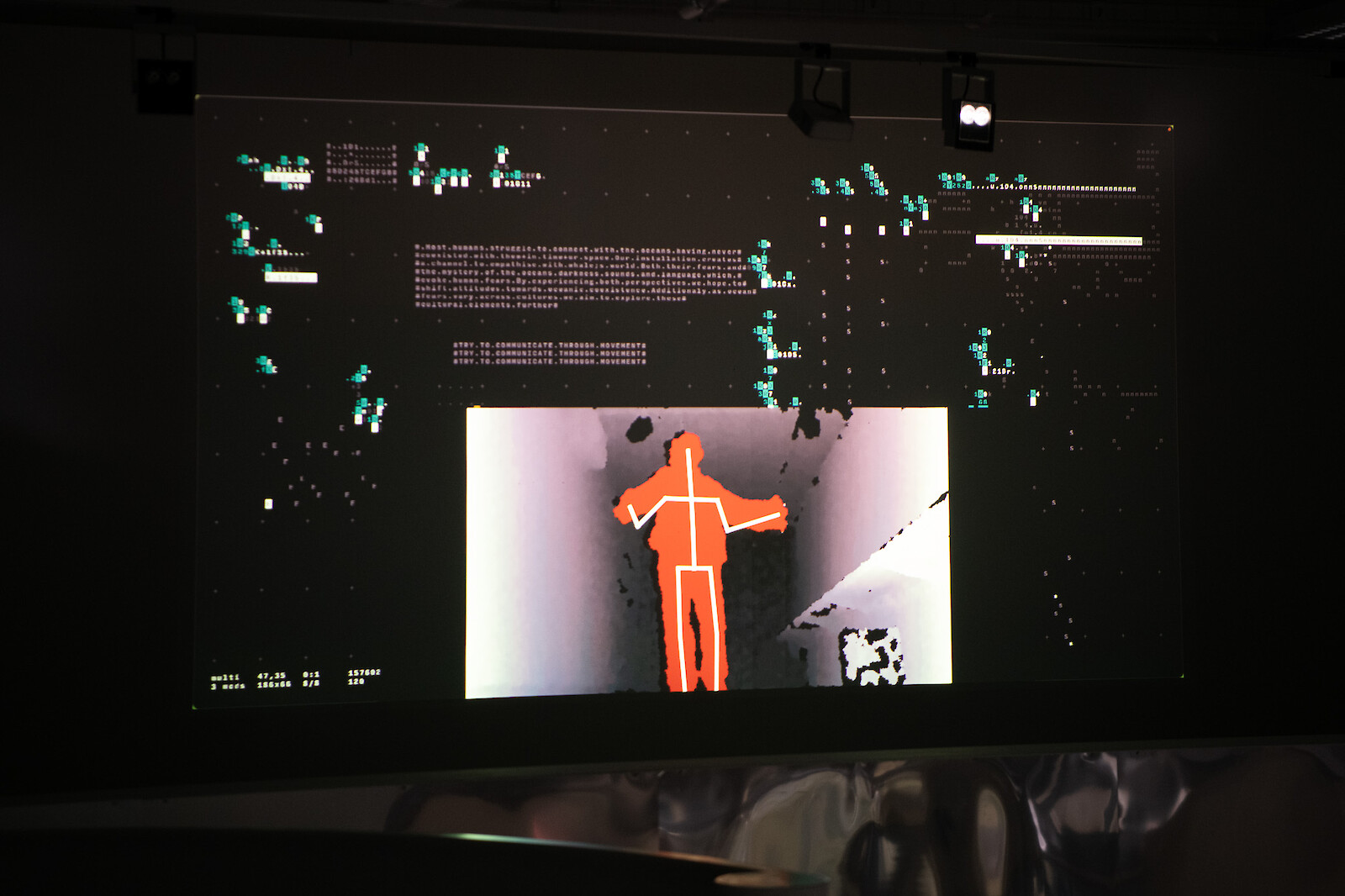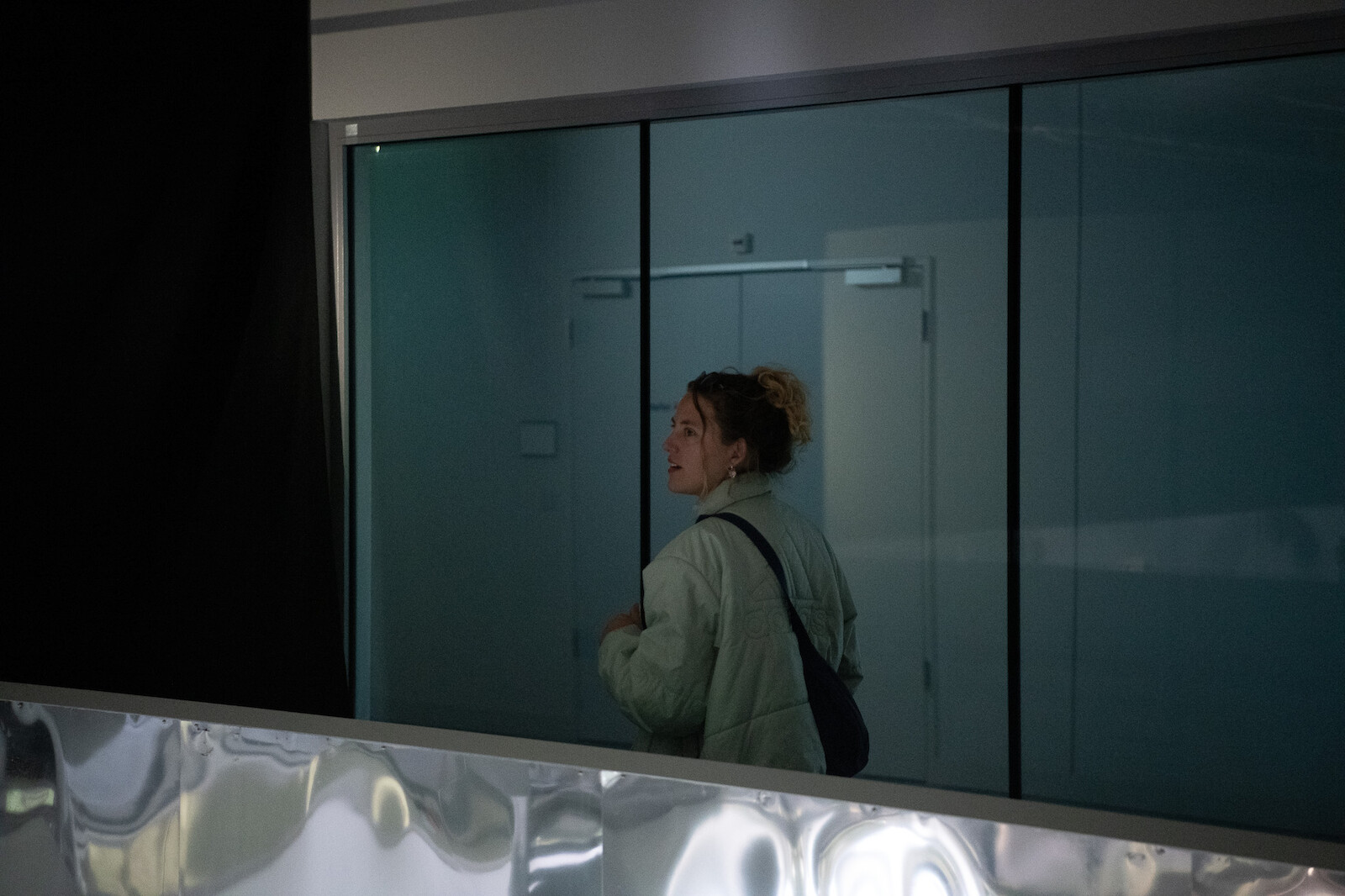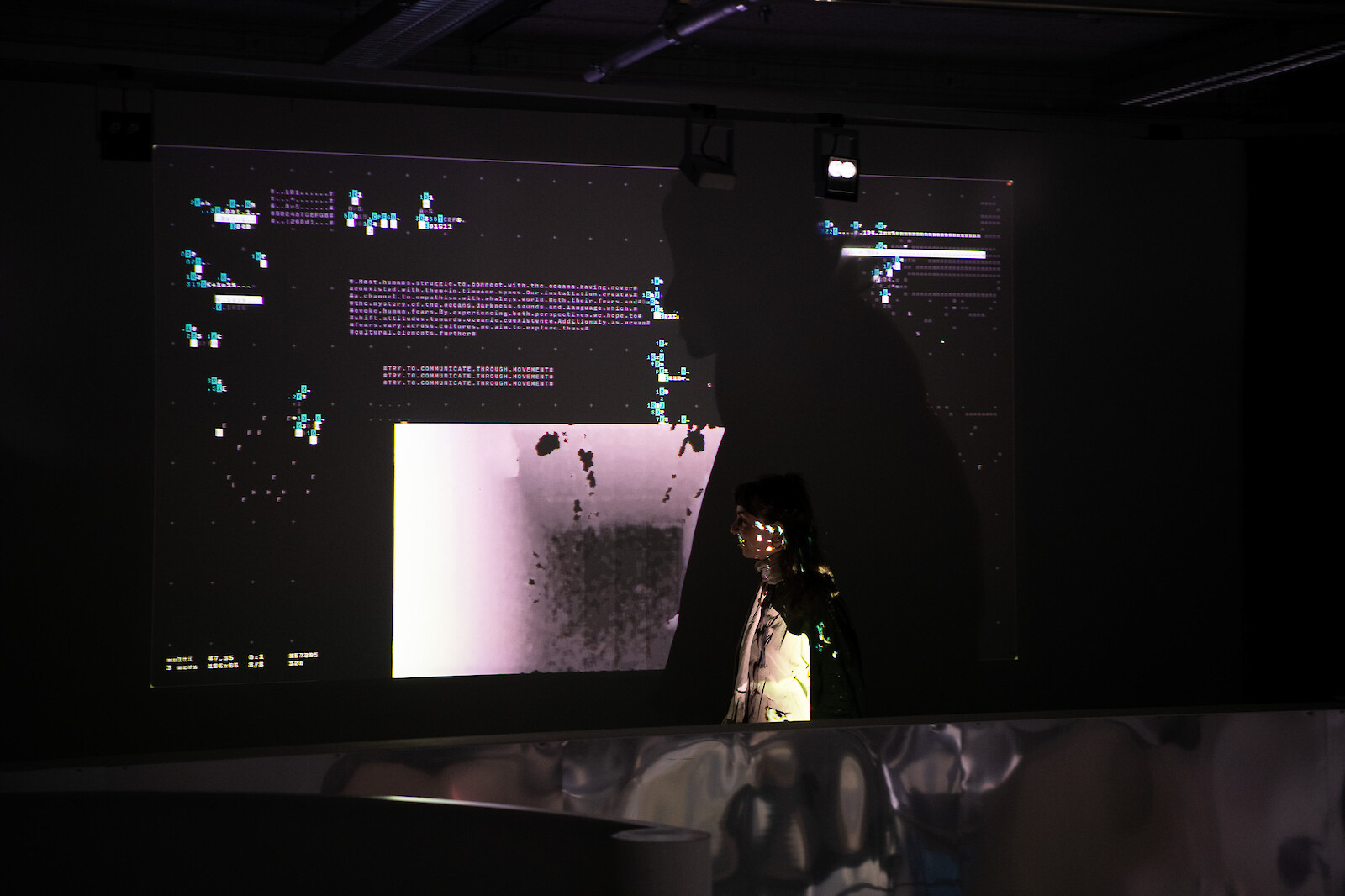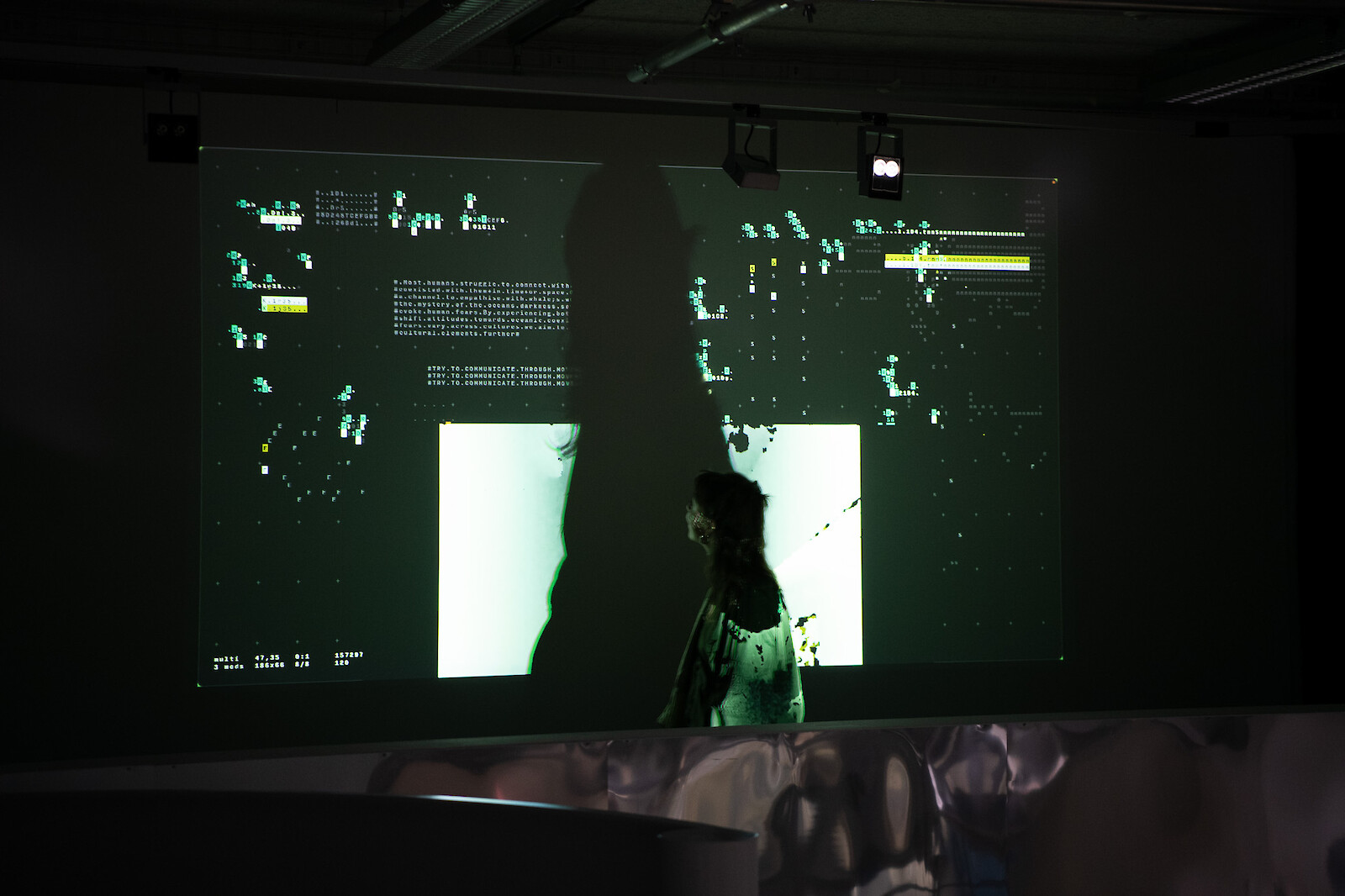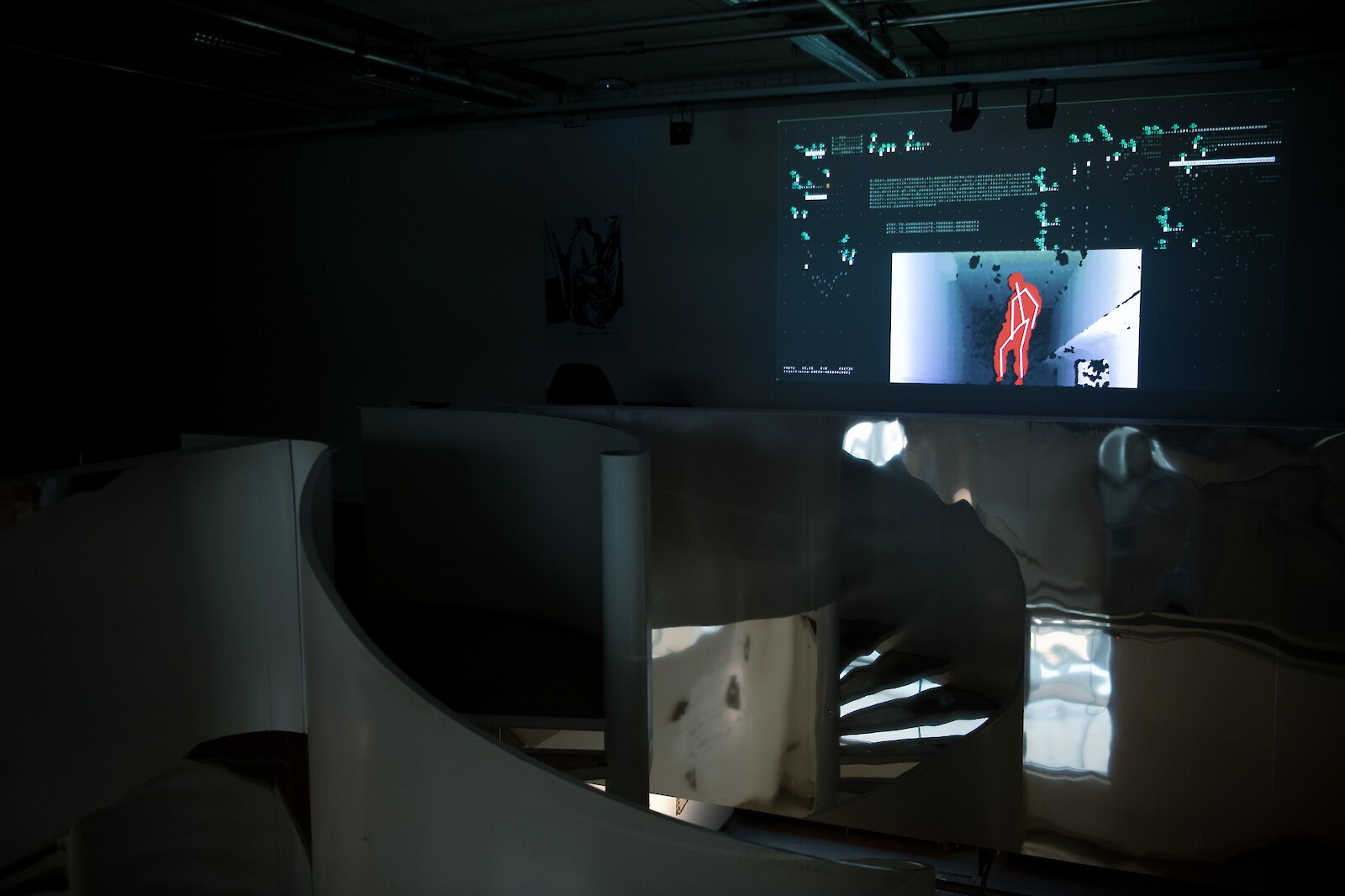DEEPER
Deeper is an immersive audio installation that explores interspecies communication and shared experiences of fear, focusing on the connection—or lack thereof—between humans and the ocean. Most people have never coexisted with the ocean in a temporal or spatial sense. Cultural narratives, genetic predispositions, and the ocean’s vastness contribute to thalassophobia, the fear of deep water, making it difficult for many to establish a meaningful connection with marine life.
Similarly, whales—sentient marine beings—experience stress and fear due to human activities. Ship strikes, fishing gear entanglement, and habitat degradation from noise, chemical, and mechanical pollution all pose significant threats. Climate change further disrupts their food sources and migration patterns, while excessive human presence can cause distress, especially during critical behaviors like feeding or calving.
Through sound, Deeper immerses audiences in the sensory world of whales, creating an opportunity to confront the fear of the ocean while fostering empathy for marine life. The installation raises questions about coexistence and communication between species, encouraging a deeper reflection on our impact on the underwater world.
Fear and the Ocean
The fear of the ocean is deeply ingrained in human history. Naval battles, harsh working conditions, shipwrecks, and media portrayals of sea monsters have contributed to its reputation as a hostile and mysterious environment. The ocean’s vastness can make people feel small and vulnerable, reinforcing their sense of detachment. This fear, however, also extends to marine life—whales, in particular, face significant stress due to human-induced disturbances, which threaten their survival.
The Impact of Human Activity
Recent studies reveal the Mediterranean’s underwater noise pollution from ships, oil drilling, and military activities is escalating, disrupting key cetacean habitats. The endangered Mediterranean sperm whale population, with only 200–300 individuals left, faces ongoing threats from ship collisions, military sonar, and plastic pollution. Conservation efforts, including Marine Protected Areas (MPAs), ship speed regulations, and rerouting, aim to mitigate these risks. However, greater awareness and policy change are needed to protect marine ecosystems.
Why Sound?
We chose sound as the medium because of its ability to create an immersive experience without being overly descriptive or theatrical. Sound allows for a direct, sensorial connection to the ocean without the constraints of visual representation. This medium also enables us to incorporate authentic deep-sea recordings, offering a genuine encounter with the underwater soundscape. The vast range of underwater sound sources—from boat propellers to marine life vocalizations—gives us a powerful tool to communicate both the beauty and the distress of the ocean environment.
Scope and Vision
By merging human and whale experiences, Deeper encourages a shift in perspective regarding the ocean and our coexistence with marine organisms. Different cultures have unique fears and relationships with the sea, and the project aims to explore these cultural elements further. By familiarizing audiences with the deep sea’s vast and unknown world, the installation promotes a caregiving attitude toward marine ecosystems. It also highlights the urgency for stricter regulations, data transparency, and conservation efforts to mitigate underwater pollution. Ultimately, Deeper invites reflection on the possibility of interspecies communication and a renewed sense of responsibility toward the ocean and its inhabitants.
Students
Guolong Wang& Markos Xenarios
Mentors
Prof. Dr. Karmen Franinović
Antoine Bertin
Luke Franzke
Dr. Lyndon Alex Jordan
